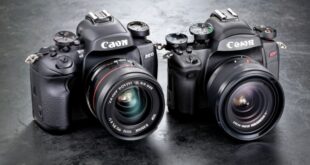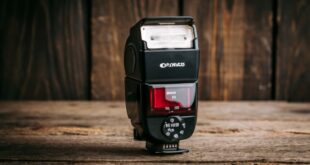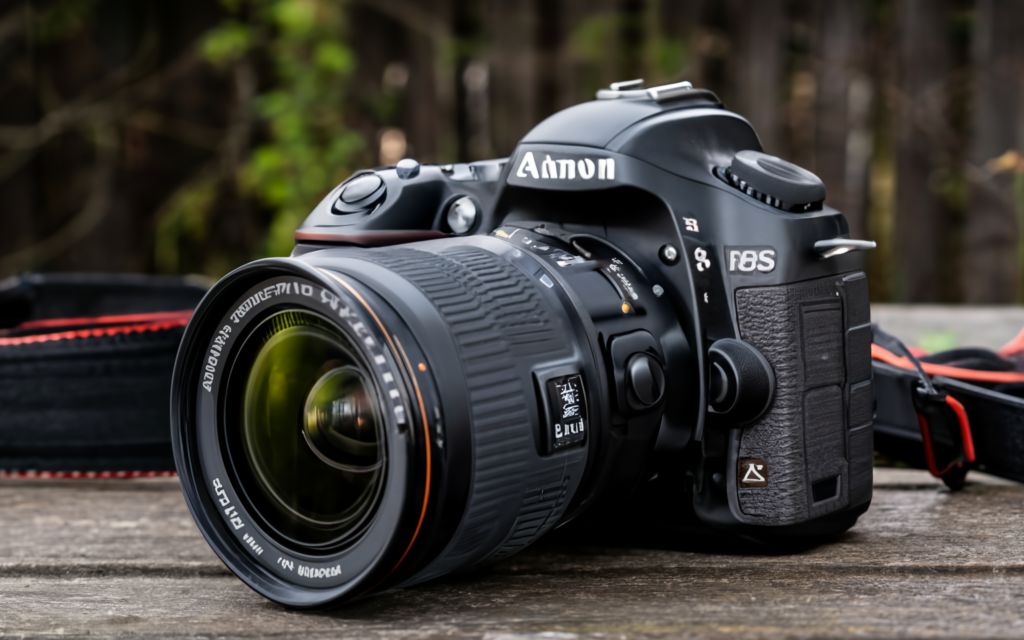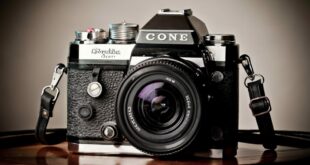A Complete Guide to Understanding Aperture and Its Importance in DSLR Cameras
Greetings, photography enthusiasts! In this article, we will delve deep into the world of aperture in DSLR cameras. Aperture plays a crucial role in achieving breathtaking photographs, allowing you to control the amount of light that enters your camera’s sensor. Understanding the concept and functionalities of aperture can take your photography skills to new heights. So, let’s embark on this enlightening journey together and unlock the secrets behind aperture in DSLR cameras.
The Basics: What is Aperture?
Aperture, also known as the f-stop, refers to the opening in a camera lens through which light passes. It determines the depth of field (the range of sharpness) and the amount of light that reaches the camera sensor. Aperture is measured in f-numbers, denoted by an “f” followed by a number (e.g., f/1.8, f/4, f/16). Each f-number represents a different aperture size, influencing the exposure and overall look of your photographs.
1. Capturing More Light: Wide Aperture (🌞)
A wide aperture, indicated by a small f-number (e.g., f/1.8), allows more light to enter the camera lens. It is ideal for low-light situations or when you want to create a shallow depth of field. Wide aperture produces stunning bokeh effects, where the background appears beautifully blurred, highlighting the subject in sharp focus.
Advantages of Wide Aperture:
➡️ Enhanced low-light performance, enabling you to capture clear images in dimly lit environments.
➡️ Beautifully blurred backgrounds, perfect for portrait photography or isolating subjects.
➡️ Ideal for capturing fast-moving subjects with a faster shutter speed, freezing the action.
➡️ Offers creative freedom, allowing you to experiment with artistic effects.
Disadvantages of Wide Aperture:
➡️ Shallow depth of field, which may result in parts of the subject being out of focus.
➡️ Reduced sharpness at the widest aperture, requiring careful focusing techniques.
➡️ Increased sensitivity to camera shake, necessitating the use of a tripod or higher shutter speed.
2. Balancing Light and Depth: Moderate Aperture (⚖️)
Moderate aperture, characterized by a medium-sized f-number (e.g., f/8), strikes a balance between capturing sufficient light and achieving a reasonable depth of field. It is a versatile choice for various photography genres, including landscapes, group shots, and architecture.
Advantages of Moderate Aperture:
➡️ Balanced exposure, ensuring both the subject and background are reasonably sharp.
➡️ Suitable for landscapes, as it allows for more depth of field, showcasing intricate details.
➡️ Reduces the risk of parts of the subject being out of focus, compared to wide aperture.
➡️ Enables a faster shutter speed than wide aperture, reducing the chance of motion blur.
Disadvantages of Moderate Aperture:
➡️ Less creative control over background blur compared to wide aperture.
➡️ Requires careful focusing techniques to ensure the subject is adequately sharp.
➡️ Limited low-light performance compared to wide aperture settings.
3. Expanding the Depth: Narrow Aperture (🔭)
Narrow aperture, identified by a higher f-number (e.g., f/16), allows less light to enter the camera lens. It is highly effective when you want to achieve a greater depth of field, ensuring that both foreground and background elements are in focus. Narrow aperture is commonly used in landscape and architectural photography.
Advantages of Narrow Aperture:
➡️ Extensive depth of field, keeping both foreground and background elements in focus.
➡️ Ideal for landscape photography, capturing intricate details from near to far.
➡️ Sharpness maintained throughout the image, including details in the background.
➡️ Reduces the impact of lens aberrations, enhancing overall image quality.
Disadvantages of Narrow Aperture:
➡️ Requires a longer exposure time due to reduced light entering the camera.
➡️ Limits the ability to capture fast-moving subjects due to slower shutter speeds.
➡️ May result in diffraction, reducing overall image sharpness at extreme narrow apertures.
4. Understanding the Relationship: Aperture and ISO (🔄)
The aperture and ISO settings are intrinsically linked, working together to achieve proper exposure. ISO refers to the sensitivity of your camera’s sensor to light. When using a wide aperture, more light enters the camera, allowing for lower ISO settings. On the other hand, narrow apertures require higher ISO values to compensate for the reduced incoming light.
Advantages of Proper Aperture-ISO Combination:
➡️ Reduces the risk of noise and graininess in photographs.
➡️ Maintains optimal image quality by using the lowest ISO setting possible.
➡️ Offers greater flexibility in adjusting exposure settings according to lighting conditions.
Disadvantages of Improper Aperture-ISO Combination:
➡️ High ISO settings may introduce noise, affecting image clarity.
➡️ Incorrect ISO settings can result in overexposure or underexposure of images.
➡️ Requires careful monitoring and adjustment of both aperture and ISO settings for best results.
5. The Impact of Aperture on Bokeh (🌸)
Bokeh refers to the aesthetic quality of the out-of-focus areas in a photograph. It is influenced by the shape and size of the diaphragm blades within the lens, which determine the aperture’s shape when wide open. Lenses with a larger number of rounded blades tend to produce smoother and more pleasing bokeh.
Advantages of Aperture’s Influence on Bokeh:
➡️ Allows for creative control over the aesthetic quality of background blur.
➡️ Smooth and pleasing bokeh can enhance the overall visual impact of a photograph.
➡️ Different lens designs produce unique bokeh characteristics, adding artistic variety.
Disadvantages of Aperture’s Influence on Bokeh:
➡️ Limited control over bokeh when using lenses with fewer diaphragm blades.
➡️ In some cases, distracting bokeh patterns or artifacts may appear in the background.
➡️ Achieving desired bokeh effects may require investing in specific lenses with larger aperture capabilities.
6. Maximizing Sharpness: Diffraction Effects (🔍)
Diffraction refers to the bending or spreading of light waves as they pass through a small opening, such as a narrow aperture. While narrow apertures provide extensive depth of field, they can also introduce diffraction, reducing overall image sharpness. Understanding the diffraction limits of your camera and lens combination can help you optimize sharpness.
Advantages of Managing Diffraction Effects:
➡️ Optimizes image sharpness by avoiding extreme narrow apertures.
➡️ Allows for better control over the balance between depth of field and image sharpness.
➡️ Enhances overall image quality, ensuring fine details are preserved.
Disadvantages of Diffraction Effects:
➡️ Extreme narrow apertures may result in visible loss of sharpness and detail.
➡️ Requires testing and understanding the diffraction limits of your camera and lens.
➡️ Balancing depth of field and image sharpness may require compromises in certain situations.
7. Choosing the Ideal Aperture (🎯)
Choosing the ideal aperture depends on various factors, including the desired depth of field, available light, subject motion, and creative intent. Each aperture setting offers unique advantages and disadvantages, allowing photographers to utilize their artistic vision. Experimentation and practice are key to understanding aperture’s potential and achieving remarkable results.
Advantages of Choosing the Ideal Aperture:
➡️ Empowers photographers to convey their creative vision through precise depth of field control.
➡️ Enhances the overall aesthetics of a photograph by manipulating background blur and sharpness.
➡️ Enables versatility in adapting to different lighting conditions and subject requirements.
Disadvantages of Choosing the Ideal Aperture:
➡️ Requires a solid understanding of aperture’s impact and camera settings.
➡️ Initial trial and error may be needed to achieve desired results.
➡️ Different lenses and camera models may yield varying results, necessitating adjustment.
| Aperture | F-stop | Depth of Field | Type of Photography |
|---|---|---|---|
| Wide Aperture | f/1.8 | Shallow | Portrait, Low-light |
| Moderate Aperture | f/8 | Moderate | Landscape, Group Shots |
| Narrow Aperture | f/16 | Extensive | Landscape, Architectural |
Frequently Asked Questions (FAQs) About Aperture in DSLR Cameras
1. What is the relationship between aperture and shutter speed?
Aperture and shutter speed work together to control the exposure of an image. A wider aperture allows more light to enter, requiring a faster shutter speed to avoid overexposure, while a narrow aperture necessitates a slower shutter speed to maintain proper exposure.
2. How does aperture affect the background in a photograph?
Aperture influences the depth of field, determining how much of the background appears in focus. Wide apertures produce shallow depth of field, resulting in a blurred background, while narrow apertures create a larger depth of field, making more of the background appear in focus.
3. Can aperture settings impact the sharpness of a photograph?
Extreme narrow apertures can introduce diffraction, reducing overall image sharpness. It is essential to find a balance between depth of field and diffraction effects for optimal sharpness.
4. Are all lenses capable of achieving wide apertures?
No, the ability to achieve wide apertures depends on the lens design. Certain lenses, often referred to as “fast lenses,” are specifically designed to offer wider maximum apertures and better low-light performance.
5. Does the distance between the lens and the subject affect aperture?
No, the distance between the lens and the subject does not directly affect the aperture setting. However, it can impact the overall depth of field, as closer subjects tend to have shallower depth of field compared to subjects at a greater distance.
6. Can I change the aperture settings during video recording on a DSLR camera?
In most DSLR cameras, changing the aperture during video recording is possible, but the process may vary depending on the camera model. Check your camera’s manual or consult online resources for specific instructions.
7. Is a higher f-number always better for achieving sharpness?
While higher f-numbers (narrow apertures) generally provide greater depth of field, extreme narrow apertures can introduce diffraction, reducing overall sharpness. It is vital to find the optimal aperture setting for balancing depth of field and diffraction effects.
8. Can I achieve bokeh effects without using a DSLR camera?
While achieving bokeh effects is more challenging without a DSLR camera, certain smartphones and compact cameras offer portrait modes or specialized software that can simulate bokeh by blurring the background digitally. However, the results may not be as precise or natural as those achieved with a DSLR and wide-aperture lens combination.
9. How can I choose the right aperture for a specific photography genre?
Choosing the right aperture depends on the desired depth of field, lighting conditions, and creative intent. For portrait photography, wide apertures (small f-numbers) are often favored to isolate the subject. On the other hand, landscape photography often benefits from narrower apertures (higher f-numbers) to achieve extensive depth of field.
10. Can I achieve both a sharp subject and a blurred background?
Yes, achieving both a sharp subject and a blurred background is possible by using a wide aperture (small f-number). This creates a shallow depth of field, keeping the subject in focus while blurring the background.
11. How does aperture affect the exposure triangle?
Aperture is one of the three components of the exposure triangle, along with shutter speed and ISO. It directly affects the amount of light entering the camera, making it crucial in determining the exposure of the image.
12. Can I use manual mode to control aperture settings?
Yes, manual mode allows full control over aperture settings, giving you the freedom to experiment and achieve the desired exposure. However, understanding the relationship between aperture, shutter speed, and ISO is essential for successful manual mode usage.
13. Are there any software tools that can help simulate different aperture settings?
Yes, various photo editing software, such as Adobe Photoshop and Lightroom, allow you to simulate different aperture settings during post-processing. While these tools can approximate the effects of aperture, they cannot fully replicate the optical properties and characteristics achieved through an actual camera lens.
A Call to Action: Unleash Your Creativity Through Aperture
Now that you have gained comprehensive knowledge about aperture in DSLR cameras, it’s time to put your learning into practice. Grab your camera, step into the world of photography, and experiment with different aperture settings. Embrace the versatility and endless creative possibilities that aperture offers to capture stunning images.
Remember, practice makes perfect. Keep honing your skills, exploring new techniques, and seeking inspiration. With each shot, you’ll become more proficient in utilizing aperture to its fullest potential. Embrace the art of photography and let your unique vision shine through every image you capture.
A Closing Statement: Explore the Boundless World of Aperture
Disclaimer: The views and opinions expressed in this article are solely those of the author and do not necessarily reflect the official policy or position of any camera manufacturer or organization.
We hope this comprehensive guide has provided you with valuable insights into the significance of aperture in DSLR cameras. Aperture, as an integral part of the photographic process, opens doors to endless creative possibilities. By understanding and harnessing the power of aperture, you can take your photography skills to new heights.
Remember, the journey to master aperture is an ongoing process. Continually experiment, learn from your experiences, and let your creativity soar. As you continue to explore and refine your skills, aperture will become a trusted ally in your photographic endeavors.
Happy shooting!



